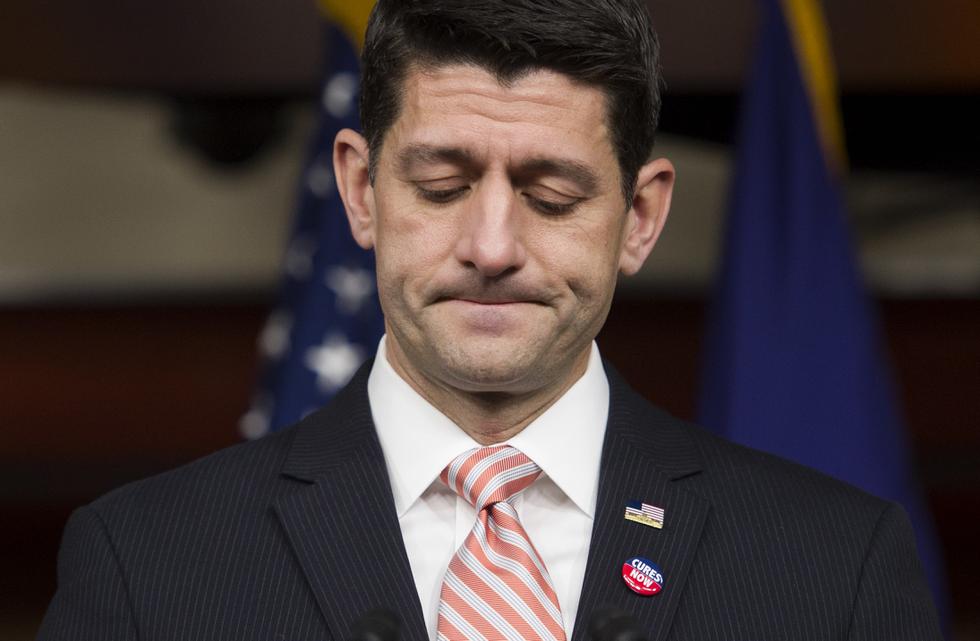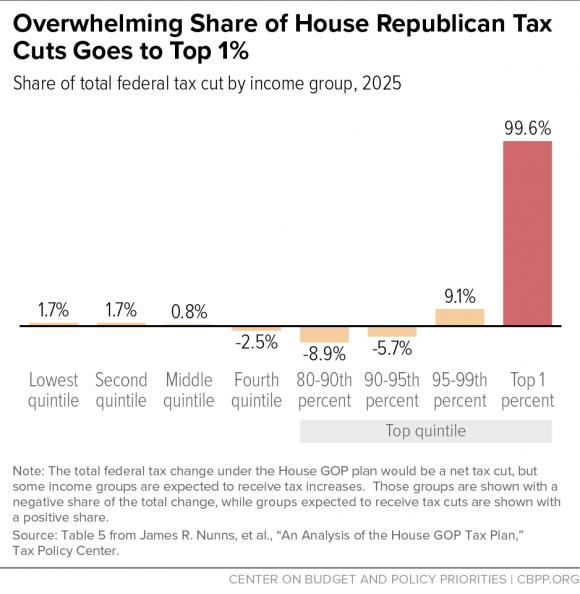
As Congress prepares to end its lame-duck session, Republican House Speaker Paul Ryan races to grease the tracks for his trickle-down tax plan.
His partner in this latest GOP shell game is Senate Majority Leader Mitch McConnell, who told reporters at a Capitol Hill press conference Monday that after Republicans finish gutting Obamacare (their first target), they intend to use a second, filibuster-proof, budget reconciliation process to ram through comprehensive tax reform.
The speaker would have you believe that his reform plan merely simplifies the tax code by shaving the number of tax brackets from the current seven-"their [the Democrats'] way"-down to just three-a #BetterWay-the average taxpayer will save big bucks.
He recently tweeted:
The U.S. tax code is too complicated. ← Retweet if you agree. #BetterWay pic.twitter.com/Do9qmHskzd
- Paul Ryan (@SpeakerRyan) December 11, 2016
But Ryan, who's conned Washington into thinking he's a veritable policy wonk, uses the rhetorical cover of a "leaner, meaner" tax code to hawk neo-Reaganomics. Fewer tax brackets do not make for a fairer or less complicated system: Flattening the tax code by reducing the number of brackets is a regressive tax strategy. Many on the left argue that adding more brackets would acutally produce a better system of taxation.
Ryan's plan is pure trickle-down economics: It would dramatically reduce the top marginal-income and corporate tax rates and eliminate the estate tax entirely.
For the average taxpayer, Paul Ryan's tax framework is no better than Donald Trump's. If anything is unique about Ryan's tax plan, it is that he managed to make it even more regressive than past GOP plans. According to an analysis by the Tax Policy Center, the top 1percent of taxpayers will have received the overwhelming share, about 99.6 percent, of Ryan's tax cuts-which would be fully phased in by 2025.
On average, the wealthiest Americans would see an 11 percent increase in their after-tax incomes. Meanwhile, the middle fifth of households would receive just $60.

Ryan's "Better Way" plan would reduce federal revenues by $3.1 trillion over the first decade and increase the national debt by as much as $3 trillion. A Center on Budget and Policy Priorities analysis found that the tax cuts would produce a massive increase in the federal deficit that would not be offset by budget cuts or economic growth.
When 60 Minutes asked Ryan whether the rich would benefit most from his tax plan, he said: "Here's the point of our tax plan. Grow jobs. Get this economy growing. Raise wages. Simplify the tax system, so it's easy to comply with." However, tax cuts aimed at the rich do not "grow jobs." Nor do they increase incomes for the working and middle classes.
Do not be distracted by Trump's antics. Instead, watch out for the speaker's "simplification" ruse. It's a Trojan horse for trickle-down economics 2.0 dreamed up by Paul Ryan, our Trickle Downer of the Week.



